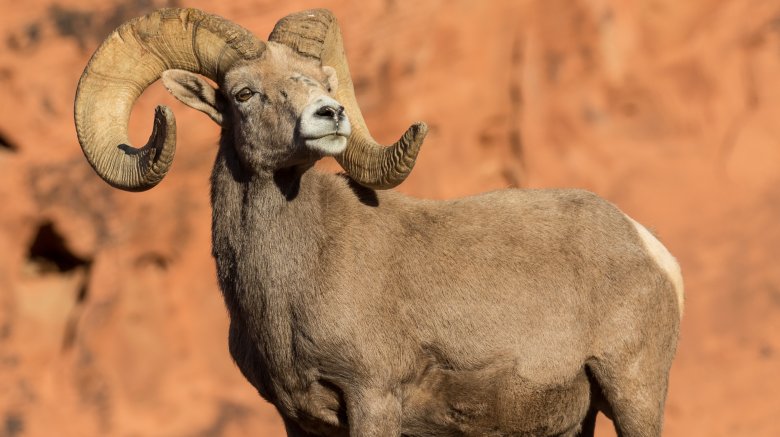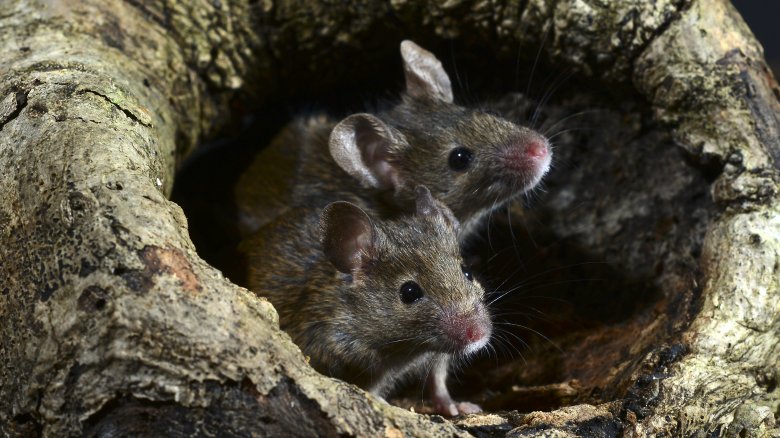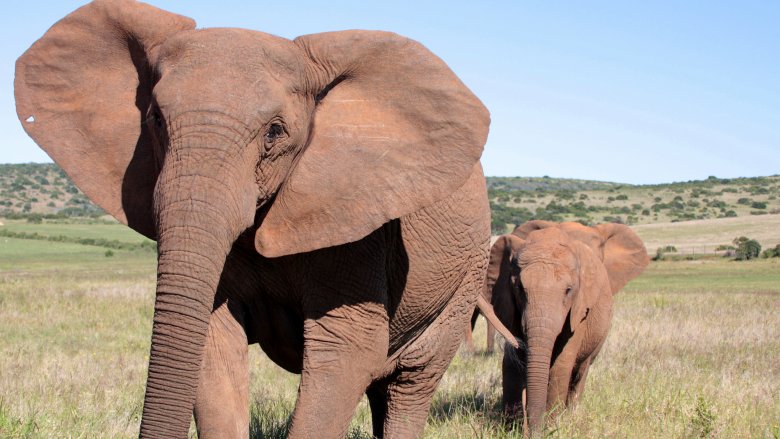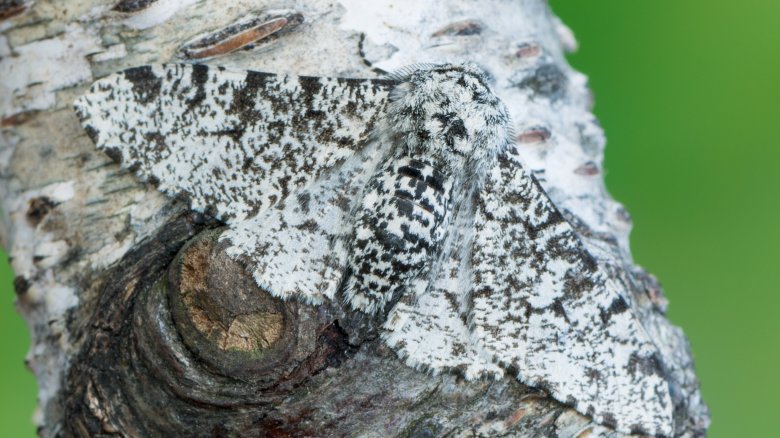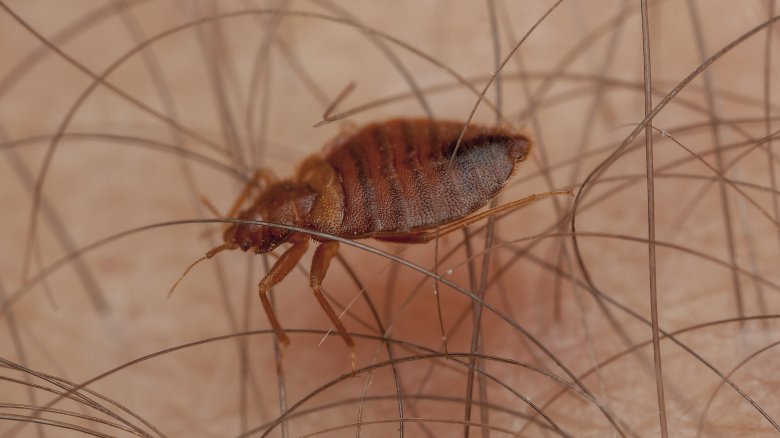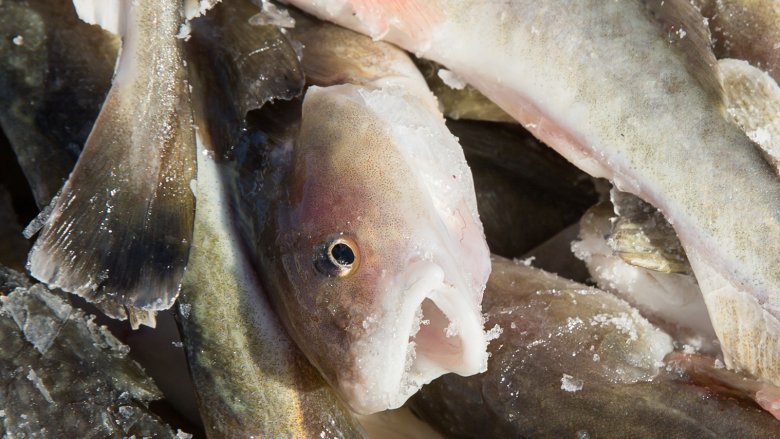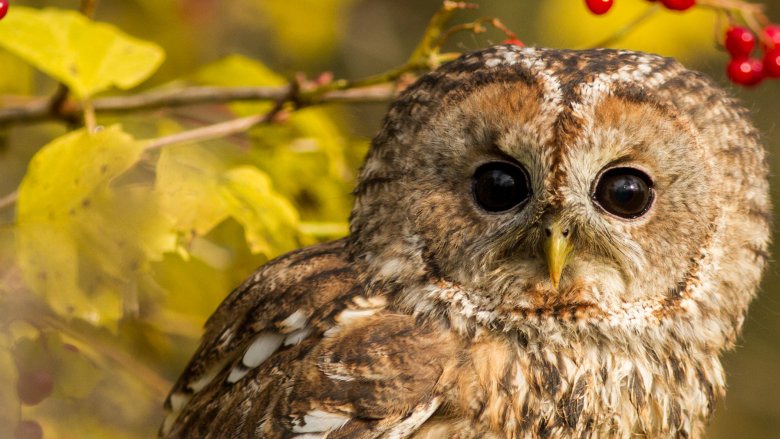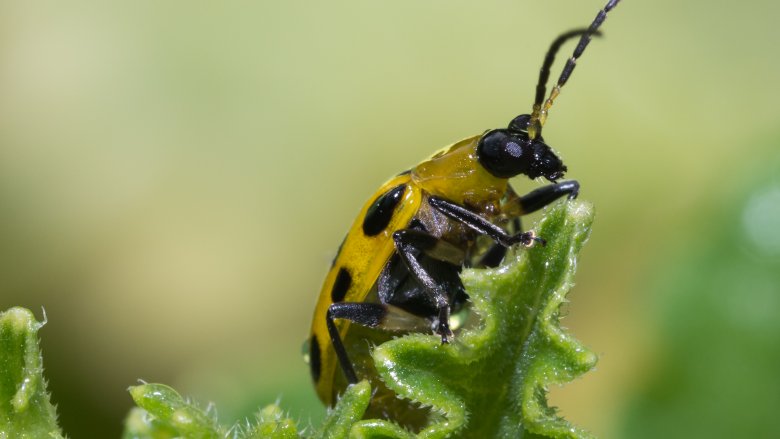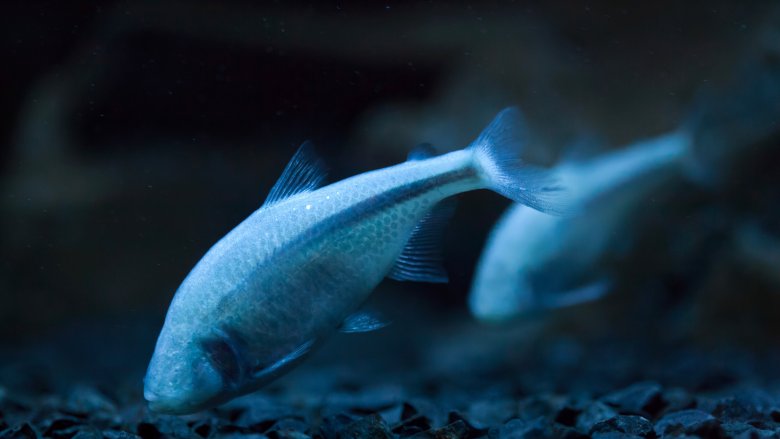Animals That Adapted To Defend Themselves Against People
It's a harsh world out there, and everyone has to find some way to get by. Adaptations happen for a reason. Sure, there are times when "evolution" gets drunk and produces bizarre hybrid children like the duck-billed, venomous, egg-laying mammal that we've christened the platypus. But usually, animals evolve not because they're coolhunters trying to follow the latest trend but because genetic adaptation is a pragmatic survival method for any species that wants to continue making babies. Now, us human beings might seem friendly, but if there's anything that proves our unfortunate role as the noisiest, most obnoxious neighbor in the apartment complex that we call Earth, it's that these animals have adapted purely out of their desperation to survive us. Ouch.
Poison-resistant mice
Oh, mice. Mankind's favorite pest. Some people think these cute little critters make great pets, while others consider them the creepy-crawly missionaries of the apocalypse. Those who fall into the latter category won't be too happy to know that over in Europe, mice are now sticking up a tiny middle finger to human poisons.
Meet the "super" mouse, a new adaptation created by Spanish and German mice getting it on with poison-resistant Algerian mice. The superpowered baby mice that result from this lovemaking are the result of a process called "hybrid speciation" where two different species get busy together — say, when a lion and a tiger create Napoleon Dynamite's favorite animal, the liger. Normally, such unholy unions result in sterile offspring and an evolutionary dead end, but it looks like there are enough fertile female mice within this new population that the majority of Spanish mice are now immune from the poison that once killed them, according to the BBC.
The specific poison that is now so yesterday to these super-mice is warfarin, an anticoagulant that causes fatal bleeding in excessive doses. Warfarin was introduced as the big new rodent assassin back in the 1950s and has proven effective until recently. But now it looks like there's a serious new pest control problem on the horizon, and this one is all our fault.
Elephants with no tusks
There are few things in nature as beautiful and elegant as the great ivory tusks of an African elephant. Unfortunately, poachers agree, which has resulted in an increasing number of African elephants being born tuskless. Normally, having big tusks would carry major evolutionary advantages, but not in a world where such elephants are the ones getting shot at.
Evolution is a weird process, but it makes sense. Back in the old days, elephants with fearsome tusks were more likely to live longer, defend themselves better — and most importantly — attract more mates. Male elephants with big, honking tusks are like those OKCupid users who got the email congratulating them on being in "the top half of most attractive users." However, due to the still-massive illegal ivory market, an elephant wearing a pair of big tusks is more likely to get hunted down. This means that big-tusked elephants don't live so long and don't get the chance to reproduce. Meanwhile, those once meek-seeming little tuskless elephants don't get shot at, live longer, and most likely have more children, resulting in more tuskless babies.
There are estimates that in some locations up to 98 percent of female elephants are now born tuskless, a number that was typically between 2 and 6 percent historically. Sadly, not having tusks actually hinders an elephant in many ways, since tusks are used for digging, eating, and other activities that these tuskless elephants can't do in the same way.
Color-changing peppered moths
Remember that one college roommate who didn't care about anyone else's stuff? The one who came home drunk every night, threw their cigarette butts in the sink, never flushed the toilet, and left their crusty old dishes on the counter? On a global scale, that roommate is us. The peppered moth is like the good roommate who dealt with all that nastiness by blending into the wallpaper.
Out in jolly old England, the peppered moth is a species that survives by camouflage, since its speckled white wings blend in perfectly with the lichen-covered white birch trees. Then, along came the Industrial Revolution. All that nasty pollution painted the trees black with soot, leaving the poor white moth easily visible to any hungry bird looking for a quick snack.
So what did the moths do? Well, they went from white to black. It turns out that peppered moths come in both white and black, and while the white moths were the dominant breed, the tree-tinting rise of industry led to all the white moths getting eaten, resulting in the formerly inferior black moths taking over as the new top dogs. This story has become a favorite discussion amongst Darwin enthusiasts, since it provides clear, demonstrable evidence of natural selection taking place in the present day.
On a side note, after England made a major effort to clean up their air, trees, and environment in the 1900s, the white moths proliferated again.
Bedbugs that can't be poisoned
While the thought of poison-resistant mice might be enough to give many people nightmares, get ready, because things are about to get worse. Way, way worse, because bedbugs are another example of an animal that has evolved to defend itself against people, like a genius chess master using their own failures to learn all of their opponent's tricks. They're also a stunning example of evolution in action, or as University of Tulsa biologist Warren Booth puts it, "a model organism for evolutionary questions."
Bedbugs are generally known for drinking human blood and ruining lives. These mattress-bound beasties were seemingly wiped off the map back in the mid-20th century thanks to the advent of toxic pesticides like DDT, but in recent years, they've made a deadly comeback. The bedbugs have evolved to be resistant to these pesticides, and they're now so unkillable that they'd make Jason Voorhees's hockey-masked face blush with jealousy. Basically, we've been trying to kill bedbugs for so long that they finally figured out how to evolve beyond our best attack.
Interestingly, it is believed that bedbugs have actually evolved alongside humans since our earliest days. Bedbugs may have originally spent their time feeding on bats, until turning their attention to humans. Since then, everything from their sleep cycle to their average lifespan has evolved right alongside us. So in a way, they're almost as close to us as dogs, albeit a lot less cuddly.
The pollution-mutated Atlantic tomcod
Speaking of poison, let's zoom on over to the Hudson River, where a tiny company called General Electric spent about three decades dumping toxic waste into the water. The nasty pollution in question is composed of polychlorinated biphenyls, or PCBs for short. PCBs don't degrade, and this waste dump polluted an entire 200-mile stretch of the 315-mile Hudson River. So yeah, not GE's brightest moment in history.
However, due to the pollution, a little bottom-feeder called the Atlantic tomcod evolved to not only survive within the PCB-contaminated waters, but even to thrive in them. This is a fascinating present-day example of rapid evolution because PCBs are pretty nasty. Most fish embryos that encounter PCBs have major heart problems, but when the Hudson got dumped in, the Atlantic tomcod just happened to possess the right set of mutated genes that allowed it to evolve to the new, harsh conditions. These fish are modern rapid-fire evolution in action, like a cigar-chomping Darwin blasting a machine gun and saying "See, chumps? I told you."
But don't get the party balloons out for the tomcods yet because there's a downside to all this. Since these fish evolved to survive in toxic waters, today's very necessary effort to clean up the Hudson (for basically all other creatures) actually puts these fish into kind of a tough spot; their evolved physiology might not do quite so well in cleaner waters.
Color-changing owls, too
When it comes to mean-spirited pranks that we've pulled on the rest of the animal kingdom, probably the biggest stink bomb of all is climate change. However, just like the peppered moth responded to human pollution by changing colors, so has Finland's tawny owl.
Out there in the snowy, freezing climates of Winterfell ... er, Scandinavia, tawny owls have traditionally had gray feathers to match their snowy environment. This coloration made it easy for them to blend into the snow and swoop down on unsuspecting prey, without being spotted by any White Walkers ... uh, natural predators. The color of a tawny owl's plumage is hereditary. It doesn't change over the course of its lifetime, and generally when a brown owl and a gray owl hook up, the gray genes prove dominant.
Enter climate change. Suddenly, those northern winters are getting warmer, meaning less snow. Perhaps not so surprisingly, researchers have discovered that over the last 50 years, the tawny owls in Finland have been getting a whole lot browner. Warmer winters have resulted in those brown owls camouflaging better in the new environmental conditions than their gray brethren. More brown owls means more breeding between pairs of brown owls, and suddenly, gray isn't in style anymore.
The corn rootworm that doesn't care about GMOs
These days, you can't turn in any direction without hearing about GMOs, cancerous pesticides, or stories about why the Monsanto corporation is pretty much Satan's breeding ground on Earth. However, one thing that maybe you didn't hear on the news is that all that genetic engineering done to corn, the most widely produced grain in the USA, is directly linked to the evolution of corn's top predator, the corn rootworm.
This adorable critter, capable of ruining any farmer's year, is another old pest who has made a big comeback thanks to evolution. Back in 1996, corporations thought they'd finally solved their little rootworm problem when they launched "Bt corn," which is genetically modified to poison rootworms. Three-quarters of the corn in the Unites States is of this variety, so you've probably had it. So have the rootworms, which have grown resistant to the poison. Farmers and agricultural companies are being blamed for planting too much of the corn and essentially forcing rootworms to adapt quickly. Scientists saw this coming from a mile away, but were routinely ignored by the corporations.
According to the New York Times, Monsanto now wants to combat the evolved rootworms with an attack called RNA interference. DuPont Pioneers have also developed their own approach. However, before either of these new products can be launched, the corporations will have to prove to the public that their altered new product isn't toxic to people as well as rootworms. Furthermore, it's entirely possible the rootworm will evolve to become immune to the new GE corn as well. Maybe mix things up this time, huh?
Mexican cave fish
So there's this really old tribal tradition in Southern Mexico, celebrated by the native Zoque people, that involves killing a lot of fish in order to help them make it through the time when their crops aren't quite ready to harvest. Since ancient times, the Zoque have gone down into a sulfuric cave to ask the gods to give them rain in the season ahead. Part of this tradition also involved going to waters deep within the cave and dropping a natural paste made of fish toxins into the water. This poison, which is derived from the roots of a barbasco plant, is only mildly toxic to humans. When the dead fish bodies floated to the surface, it provided the Zoque people with lots of good sustenance for the coming season.
However, in recent years, it looks like these Mexican cave fish have decided that they're fed up with this tradition.
These fish, known as the Atlantic molly, are already pretty unique just for the fact that they can survive swimming in sulfuric waters that should kill them. When they were studied by researchers Gil Rosenthal and Michael Tobler, the two scientists found out that the tough little cave fish were evolving to be resistant to the barbasco poison. Furthermore, it looks like they're passing this immunity onto their children, but it's just extra protection because this ancient ritual is now banned.
Timely pink salmon
Don't worry, the salmon you know and love aren't changing colors, becoming toxic for humans to eat, growing opposable thumbs, or sprouting venomous spurs like the deadly platypus wields. But global climate change is kick-starting some evolutionary adaptations within this familiar fish so it can better survive in this strange new world.
Over in Alaska, pink salmon have been dealing with rising temperatures in the streams. That's bad news for the fish, which have higher disease rates when the water temperature goes all crazy. Rather than waiting around and keeping an eye on it, the salmons boogied. These smart pink stream-surfers changed their entire migration pattern in response to climate change. Research from the University of Alaska has shown these salmon now migrate almost a full two weeks earlier than they did back in the good old days of the early '70s.
But before anyone calls this a behavioral change rather than full-on evolution, hold your horses. Studies by ecologist Ryan Kovach of the University of Alaska in Fairbanks have found evidence linking this new behavior to a genetic adaptation within the fish, demonstrating natural selection against the late migrators. Yes, those late migrators have genetic factors — not lazy habits — that cause them to hit the snooze button for too long. Rise and shine, guys.
Bighorn sheep with not-so-big horns
Now here's an animal that's evolving in a way that it isn't too happy about, and all because of human attacks. The bighorn sheep of Alberta, Canada, are literally named for their insanely distinctive, huge, menacing horns. Unfortunately, just like with the African elephants, those big horns make them a big target for hunters, which is causing artificial selection to favor sheep with smaller horns.
Evolution would generally tip the scales toward larger horns since the bigger horns are better for a male wanting to fight, defend itself, or show off to all the single ladies. However, human hunters are causing the opposite to happen. Regulations in Alberta stipulate that rams can only be hunted after their horns have grown to be at least an almost-finished circle of four-fifths. But even the rams that have reached this point, usually by about five years of age, are still not at their reproductive peak. This means that by the time they've been shot up and mounted on someone's wall, they probably haven't fathered any children. Meanwhile, the smaller rams with smaller horns are less likely to be hunted, resulting in these ones producing more offspring, and furthering their smaller genes on to the next generation.
Sadly, unless hunting laws are changed, future generations of bighorn sheep probably won't have the big horns that once made them iconic.
